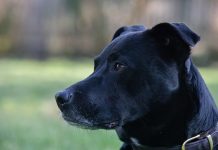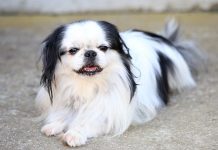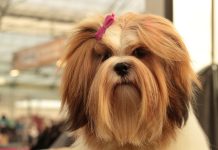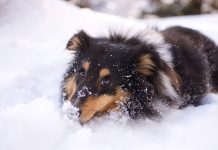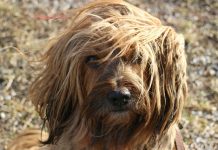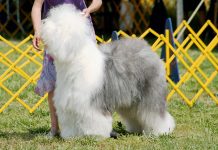History and Origins of the King Charles Spaniel Breed

The King Charles Spaniel, often referred to simply as the Cavalier King Charles Spaniel, is a beloved toy breed known for its elegant appearance, affectionate nature, and royal history. This breed has a fascinating history that traces back several centuries, filled with connections to European nobility and English royalty.
The origins of the King Charles Spaniel can be traced back to small toy spaniels that were popular in Europe during the Renaissance period. These dogs were cherished companions among nobility and aristocrats, particularly in England. The breed’s association with royalty began during the reign of King Charles I (1600-1649) of England, who was known for his deep affection for these small spaniels. They became known as “King Charles Spaniels” due to their close association with the king.
The breed’s popularity continued into the 17th century during the reign of King Charles II (1630-1685), who was also a devoted enthusiast of these spaniels. King Charles II was often seen in the company of his beloved spaniels, and he even issued a decree that allowed these dogs to enter any public space, including the Houses of Parliament.
Over time, the King Charles Spaniel breed evolved, with a focus on developing specific traits and characteristics. The modern Cavalier King Charles Spaniel we know today is believed to have descended from a crossbreeding between the original King Charles Spaniels and Asian toy breeds like the Pug and Japanese Chin, which were introduced to Europe in the 17th century.
In the early 20th century, an effort was made to revive the older-style King Charles Spaniels, which had a flatter face and a more pronounced dome skull. This resulted in the development of the Cavalier King Charles Spaniel, a breed that closely resembles the spaniels depicted in many historical paintings.
Today, the Cavalier King Charles Spaniel is cherished worldwide for its friendly disposition, affectionate nature, and graceful appearance. They are popular companion dogs and excel in roles as therapy dogs due to their gentle temperament and sociable personality. The breed’s rich history and royal connections continue to add to its allure and popularity among dog lovers everywhere.
Physical Characteristics and Appearance of King Charles Spaniels:
The King Charles Spaniel, or Cavalier King Charles Spaniel, is a small and elegant toy breed known for its distinctive appearance and charming expression. They have a well-balanced body and a graceful gait, showcasing their aristocratic heritage.
- Size and Build: Cavalier King Charles Spaniels are compact dogs with a sturdy build. They typically stand between 12 to 13 inches (30 to 33 cm) tall at the shoulder and weigh around 13 to 18 pounds (6 to 8 kg). Despite their small size, they are well-proportioned and athletic.
- Coat: One of the breed’s most striking features is its silky, medium-length coat, which can be slightly wavy. Cavaliers come in four distinct color combinations recognized by breed standards: Blenheim (chestnut and white), tricolor (black, white, and tan), ruby (solid rich red), and black and tan.
- Head and Face: They have a distinctive head with a slightly rounded skull and a well-defined stop. Their large, expressive eyes are dark and round, giving them a sweet and appealing expression. Ears are long and feathered, framing the face beautifully.
- Tail: The Cavalier’s tail is moderately long, carried gracefully and often wagging cheerfully.
- Overall Appearance: Cavaliers possess an elegant appearance with a gentle expression, showcasing their affectionate and friendly nature.
King Charles Spaniel Temperament and Personality Traits:
Cavalier King Charles Spaniels are known for their outgoing and affectionate nature, making them wonderful companions and family pets. They possess several key personality traits that contribute to their popularity:
- Friendly: Cavaliers are naturally sociable and get along well with people of all ages, including children and other pets. They thrive on companionship and are happiest when surrounded by their family.
- Gentle: These spaniels have a gentle and kind temperament, making them ideal therapy dogs. They are sensitive to their owner’s emotions and enjoy snuggling and providing comfort.
- Playful: Despite their regal appearance, Cavaliers are playful and energetic. They enjoy interactive games and daily walks but are also content to curl up on the couch with their owners.
- Adaptable: Cavaliers are adaptable to various living situations, whether in an apartment or a larger home. They do well in urban or rural settings as long as they receive proper exercise and attention.
- Intelligent: This breed is intelligent and eager to please, which makes training relatively easy. Positive reinforcement methods work best due to their sensitive nature.
Overall, Cavalier King Charles Spaniels are affectionate, sociable, and charming dogs that bring joy to their families with their loving demeanor and delightful personality. They thrive on human companionship and are well-suited to households seeking a devoted and loyal canine companion.
Training and Socialization Needs for King Charles Spaniels:
Cavalier King Charles Spaniels are intelligent and eager to please, which makes them relatively easy to train with positive reinforcement techniques. Here are some important considerations for training and socializing this breed:
- Early Socialization: Start socializing your King Charles Spaniel puppy early to help them become well-adjusted adults. Introduce them to various people, animals, and environments in a positive and controlled manner to build their confidence and prevent shyness or fearfulness.
- Basic Obedience: Teach basic obedience commands such as sit, stay, come, and heel using positive reinforcement methods like treats, praise, and play. Cavaliers respond well to gentle training techniques and enjoy working closely with their owners.
- Consistency: Be consistent in your training approach and establish clear boundaries. Cavaliers thrive on routine and will respond best to positive reinforcement and rewards for good behavior.
- Gentle Handling: Due to their sensitive nature, avoid using harsh training methods or corrections that could cause stress or anxiety. Use patience and understanding to build trust and cooperation.
- Exercise Needs: Cavaliers are moderately active and require regular exercise to stay healthy and happy. Daily walks, play sessions, and interactive games will help meet their exercise needs and prevent boredom.
- Attention and Affection: Cavaliers thrive on human companionship and should not be left alone for long periods. Include them in family activities and provide plenty of positive attention to prevent separation anxiety.
- Training Challenges: Some Cavaliers can be stubborn or easily distracted, especially during adolescence. Consistent training and positive reinforcement will help overcome any challenges.
Health Considerations and Common Issues in King Charles Spaniels:

While generally healthy dogs, King Charles Spaniels are prone to certain health conditions due to their small size and breed characteristics. Regular veterinary care and responsible breeding practices can help minimize these risks. Common health considerations include:
- Mitral Valve Disease (MVD): This heart condition is prevalent in Cavaliers and can lead to heart failure. Regular cardiac screenings are recommended for early detection and management.
- Syringomyelia (SM): A neurological condition where fluid-filled cavities develop within the spinal cord, causing pain and discomfort. Symptoms may include scratching or sensitivity in the neck and shoulders.
- Hip Dysplasia: An inherited condition where the hip joint does not develop properly, leading to arthritis and mobility issues.
- Ear Infections: Cavaliers have long, floppy ears that can trap moisture and debris, making them prone to ear infections. Regular cleaning and care are essential.
- Eye Conditions: Some Cavaliers may develop eye problems such as cataracts, progressive retinal atrophy (PRA), or dry eye syndrome (keratoconjunctivitis sicca).
- Dental Issues: Small breed dogs like Cavaliers are susceptible to dental problems, including tooth decay and gum disease. Regular dental care is crucial to maintain oral health.
To minimize health risks, choose a reputable breeder who screens for genetic disorders and provides health clearances for breeding stock. Regular veterinary check-ups, a balanced diet, and proper exercise and grooming are essential for maintaining the overall health and well-being of your King Charles Spaniel.
Living with a King Charles Spaniel: Suitable Environments and Lifestyle Considerations
Cavalier King Charles Spaniels are well-suited to a variety of living environments, but they thrive best in homes where they receive plenty of attention, companionship, and love. Here are some important considerations for living with a King Charles Spaniel:
- Indoor Living: Cavaliers are indoor dogs and should not be kept outside for long periods. They enjoy being close to their families and prefer to share indoor spaces. Ensure your home is safe and free of hazards, especially for a small dog like a Cavalier.
- Companionship: Cavaliers are affectionate and social dogs that bond closely with their owners. They do not do well when left alone for long periods and may develop separation anxiety. Consider your lifestyle and availability for companionship before bringing home a Cavalier.
- Exercise Needs: Despite their small size, Cavaliers are moderately active and require regular exercise to stay healthy. Daily walks, playtime, and interactive games will help meet their exercise needs. A fenced yard is ideal for off-leash playtime in a safe environment.
- Grooming: Cavalier King Charles Spaniels have a medium-length silky coat that requires regular grooming. Brush their coat several times a week to prevent mats and tangles, and trim their nails regularly. Pay special attention to their ears to prevent infections.
- Training and Mental Stimulation: Cavaliers are intelligent and eager to please, making them relatively easy to train. Provide mental stimulation through obedience training, puzzle toys, and interactive games to keep their minds engaged.
- Family-Friendly: Cavaliers are excellent family dogs and get along well with children and other pets when properly socialized. Supervise interactions with young children to ensure both parties are gentle and respectful.
- Healthcare: Cavaliers are prone to certain health issues, so regular veterinary check-ups are essential. Maintain a healthy diet, provide dental care, and monitor for signs of health problems such as heart murmurs or neurological issues.
King Charles Spaniel Variations and Breeding Practices
The King Charles Spaniel, also known as the Cavalier King Charles Spaniel, is a purebred breed recognized by kennel clubs worldwide. The breed standard specifies certain characteristics and color variations. While Cavaliers come in four recognized color patterns (Blenheim, tricolor, ruby, and black and tan), variations within these color patterns can occur.
Breeding practices for Cavaliers should prioritize health, temperament, and conformation to the breed standard. Responsible breeders conduct health screenings for genetic disorders such as mitral valve disease (MVD), hip dysplasia, and eye conditions before breeding. They strive to produce puppies with sound health and stable temperaments, ensuring the long-term well-being of the breed.
When considering a Cavalier King Charles Spaniel, choose a reputable breeder who prioritizes the health and welfare of their dogs. Avoid purchasing from puppy mills or irresponsible breeders who prioritize profit over the well-being of the dogs. A healthy and well-bred Cavalier will be a delightful addition to your family and bring years of joy and companionship.
50 Best Names with Meanings for Cavalier King Charles Spaniels
Naming your Cavalier King Charles Spaniel is a fun and exciting part of welcoming them into your family. Here are 50 charming names with meanings that may be perfect for your new furry friend:
- Bella – Italian for “beautiful”
- Charlie – A classic and friendly name
- Luna – Latin for “moon”
- Max – Short for Maximus, meaning “greatest”
- Rosie – A sweet name associated with roses
- Buddy – A companion and friend
- Lucy – Light or illumination
- Ollie – Short for Oliver, meaning “olive tree”
- Sadie – Princess or noblewoman
- Teddy – A cute and cuddly name
- Daisy – A cheerful and bright flower name
- Milo – Soldier or merciful
- Sophie – Wisdom or skill
- Cooper – Barrel maker
- Molly – Bitter or strength
- Archie – Bold and genuine
- Ruby – A precious gemstone
- Finn – Fair or white
- Ella – Beautiful fairy
- Toby – God is good
- Poppy – Red flower
- Jack – God is gracious
- Zoe – Life or alive
- Cody – Helpful
- Bailey – Bailiff or steward
- Gracie – Grace or elegance
- Winston – From a friendly town
- Penny – A small coin or treasure
- Louie – Famous warrior
- Lily – Symbol of purity and beauty
- Riley – Courageous
- Hazel – Hazelnut tree
- Rocky – Resembling a rock
- Phoebe – Bright and shining
- Fergus – Strength and manliness
- Roscoe – Deer forest
- Piper – Flute player
- Harley – From the hare’s meadow
- Winnie – Fair one or blessed
- Gus – Majestic or venerable
- Millie – Gentle strength
- Marley – From the pleasant wood
- Ivy – Climbing vine plant
- Finnegan – Fair or white
- Maisie – Pearl
- Jasper – Treasurer
- Willow – Graceful and slender
- Sammy – Listener
- Sasha – Defender of mankind
- Zeke – God strengthens
Choose a name that resonates with your Cavalier’s personality and captures their unique charm. Whether you prefer a classic, trendy, or meaningful name, your Cavalier King Charles Spaniel will surely appreciate the love and attention you give them, no matter what name you choose.

In conclusion, this comprehensive guide to King Charles Spaniel dogs has provided a detailed overview of this charming and beloved breed. Throughout our exploration, we’ve delved into the history, distinctive characteristics, and essential care considerations that define King Charles Spaniels. Known for their affectionate and gentle nature, King Charles Spaniels make wonderful companions for families and individuals seeking a loving and adaptable pet. They thrive on companionship and are well-suited to various living environments, from apartments to larger homes. As you embark on your journey with a King Charles Spaniel, may you appreciate their unique qualities and form a strong bond with this delightful breed, creating lasting joy and companionship together.







